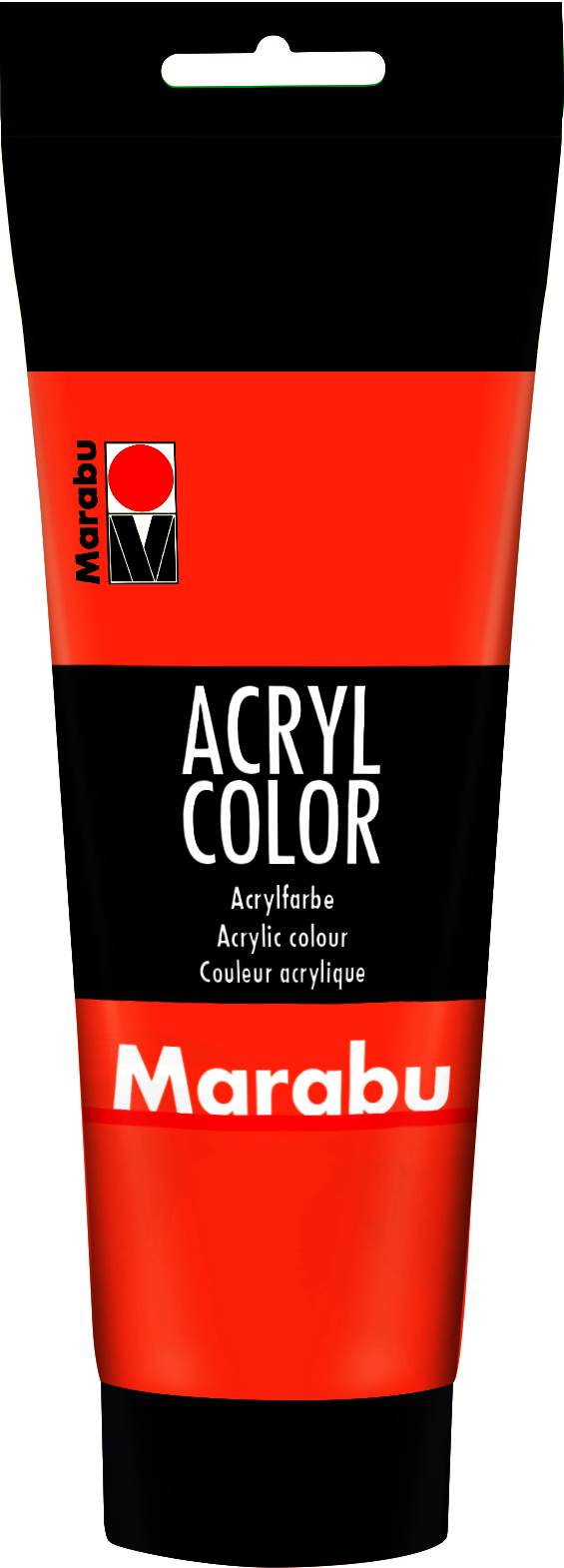Marabu Acryl Color
orange 013, 225 ml
12010025013


Creamy, water-based acrylic paint. The colours can be mixed together, they can be diluted with water, are quick drying, light-fast and water-resistant. For application with a brush, paint roller, sponge. Ideal for incorporating in Mixed Media works of art and Art Journaling. Use on canvas, paper, wood, etc..
In addition to a selection of colours, all you need to get started is a suitable, light-coloured painting surface (stretcher frame, painting board or cardboard), a white (paper) plate for mixing the colours, a container of water and a selection of high-quality brushes (preferably easy-care synthetic hair brushes such as Marabu Universal or Marabu Decoration & Hobby). There are a variety of brush shapes with round or flat tips, cat's tongue brushes or fan brushes, and there are also painting knives for spackling and other special tools. For the beginning, a few brushes with round and flat tips in different sizes are sufficient. An easel is also not yet necessary for the beginning. A well-covered table is sufficient. Also a painting apron or old clothes, because acrylic paint can only be washed out of clothes when wet. Stretcher frames are canvases stretched on frames and usually already pre-primed, i.e. painting surfaces for acrylic paints do not need to be specially pre-treated before painting.
Tips for the first steps with Acryl Color:Depending on your preference, Acryl Color can be used as an opaque ready-to-use paint or, diluted with a little water, as a glazing paint. It can even be applied with a spatula. Painting over or adding to the pictures is possible at any time. To get started, transfer or trace a template onto the painting surface.
For mixing colours, a colour circle provides orientation at the beginning. Acrylic paint dries a little darker - so tend to mix the colours a little lighter and use black sparingly. When changing colours, wash the brush well with water to avoid mixing colours.
When painting, it is a good idea to start with the background and then work your way forward, layer by layer. Smaller mistakes can simply be painted over with the next layer. For a perfect colour gradient, start with a pure light shade and apply it over the entire surface. Gradually add more of the second colour tone to the still wet paint and slowly wipe it into each other to create an even transition to the second colour shade. A large, flat brush or a sponge is very suitable for this technique. For small motifs, use correspondingly smaller brushes and for details it is best to use the smallest brush with a round tip.
Important: After painting, immediately wash out the used tools used thoroughly.